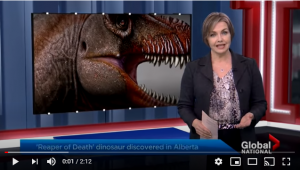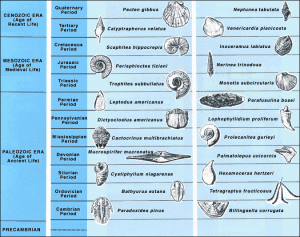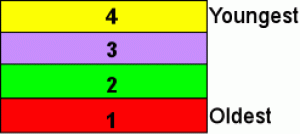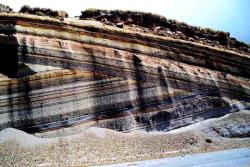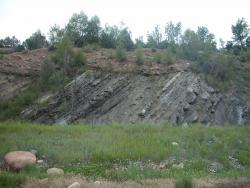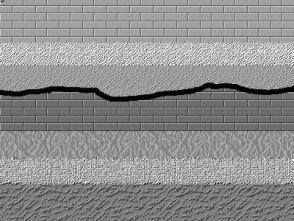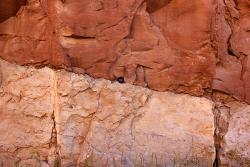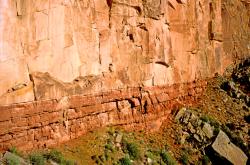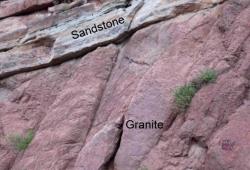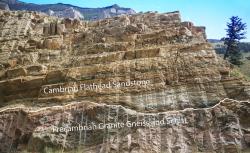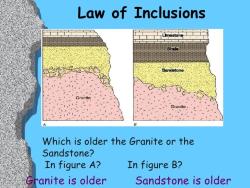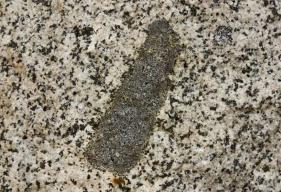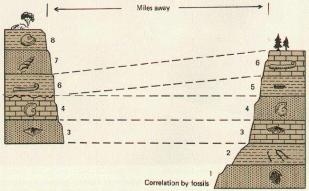Daily Dose of Dinos: The Reaper of Death
Section 1: Relative Dating
Click here if you are a student at Snowflake, Holbrook, or Heber to access the Understanding Relative Dating SUSD5 Student Version assignment.
In this section, we will learn how scientists go about figuring out how old rocks, minerals, and fossils are.
The first method is called Relative Dating. Relative dating does not give an exact date. It tells us orders of sequence instead. Which rock layer is older and which is younger? In the image below, you will see the tracks of a bird, a barefoot woman, a businessman, a motorcycle, and a really small clown car. Using deductive reasoning, tell a story in chronological order. Click on the picture to enlarge it if needed.
There are a few techniques used to help us relatively date rock strata.
Index fossils
Index fossils are fossils that lived a relatively short period of time, were abundant and were geographically widespread. Index fossils help paint a picture of how organisms might have changed and evolved over time. They can show how some species lived and what species replaced them. They also demonstrate that some species haven't changed all that much. Using index fossils helps scientists determine the relative age of rock strata.
Here is an example of how valuable index fossil is when trying to relatively date some rock strata. If you come across a Paradoxides pisus when looking at rocks, you can be assured that the layer in which you found this fossil is from the Cambrian Period or about 500 million years old, because the Paradoxides pisus lived 500 million years ago and it has never been found in any other rock strata that are either younger or older.
Law of Superposition
The Law of Superposition states that in undisturbed layers of rock, the oldest rocks are on the bottom and get young in age as you move up the layers. We already know that sedimentary rocks are formed by sediments being horizontally deposited. Every new layer is deposited on top of the older layer. The bottom layers remain unseen to us until tectonic processes or weathering and erosion make them visible.
Cross-Cutting Relationships
Cross-cutting relationships state that any feature that cuts across a body of rock is younger than the rock that it cuts across. Faults can offset layers that tell us that the fault happened after the layers were deposited. If magma intrudes, creating a sill, we know that the sill is younger than the layer above and below, because the layers already had to exist in order for a sill to be formed. You can tell that a batholith is younger than the layers that are on top because a batholith intrudes into current layers
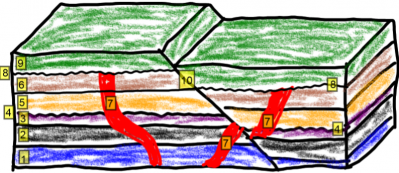
|
|
In the left image above, you can see the relative order in which each event and layer occurred. Layers 4 and 8 represent periods of erosion by using squiggly lines. Number 7 has to have come after 1-6 because it cuts across all of the other layers. Layer 10 represents a fault, in this case, a normal fault caused by tension. It happened last and we know that because all of the other layers had to have been there before the Earth faulted.
Unconformities
Sometimes rock layers are missing due to weathering and erosions. These gaps in rock layers are called unconformities. After layers have been eroded, other sediments will be laid on top. These gaps represent a missing period in our relative time scale.
An angular unconformity occurs when rocks are tilted, then eroded and then new sediment is deposited on top.
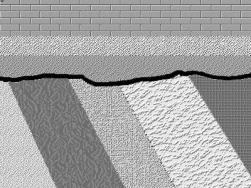
|
|
|
A disconformity occurs when there is evidence that horizontal layers eroded and then were reburied, representing another gap in the age sequence.
|
|
|
A nonconformity occurs when igneous and metamorphic rocks are exposed due to uplift, eroded and then sediments are deposited on top. An example would be an intrusive sill that was exposed due to weathering and erosion and then reburied by overlying sediment. Again, this represents a gap in the rock record. We don't know how long it took for the rock to be exposed because the evidence was weathered away.
|
|
Law of Inclusions
This law states that if a rock contains fragments of another rock, then it must be younger than the fragments.
|
|
|
Rock Correlation
Rock correlation is matching exposed layers in one area, to exposed layers in another area. Index fossils are used to connect and prove that these layers are the same.
Sometimes relative dating does not help with dating rocks, so scientists use absolute dating instead, which will be discussed in the next section.










